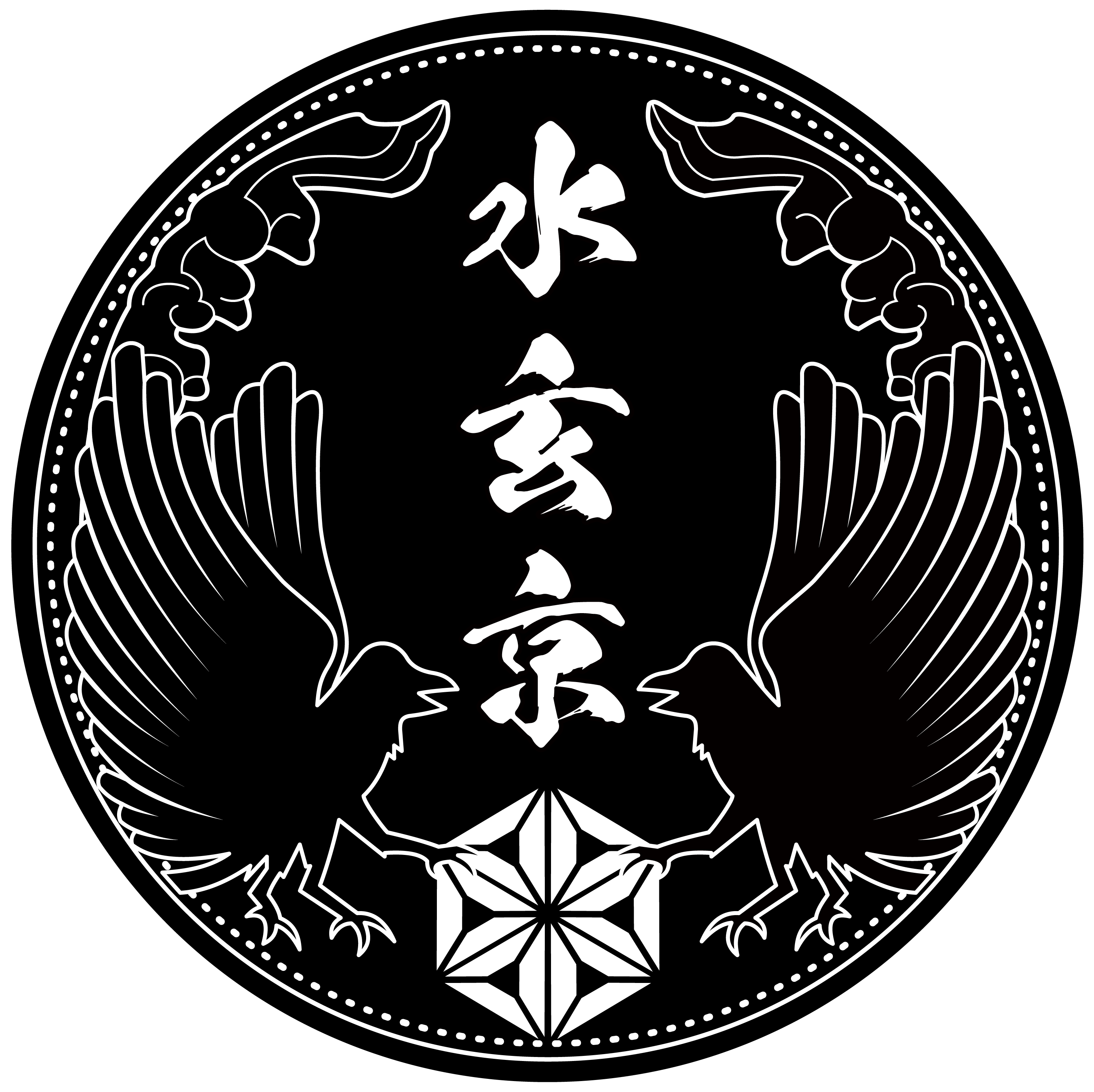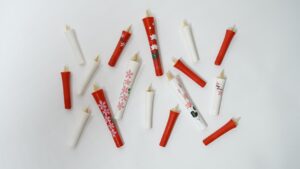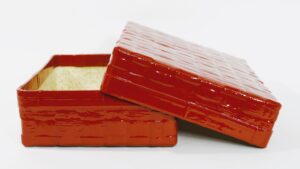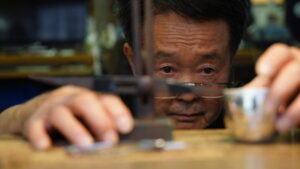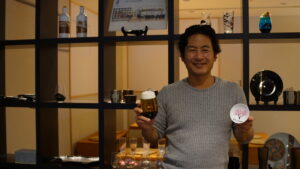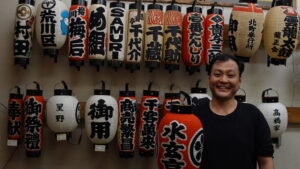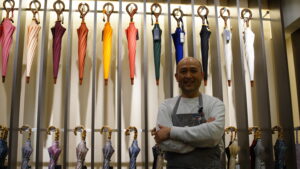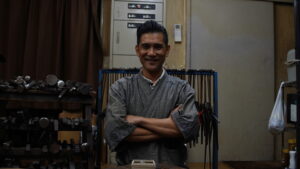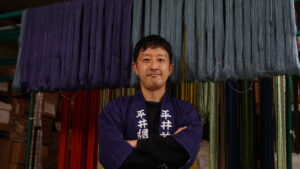Fukuoka Weaving Co., Ltd. is expanding their business activity into various fields such as lake water purification and producing bags in addition to weaving. We spoke with Hironori Fukuoka, a fourth-generation traditional craftsman for Nishijin Ori, at the factory located in a residential area in Kamigyo-ku, Kyoto.
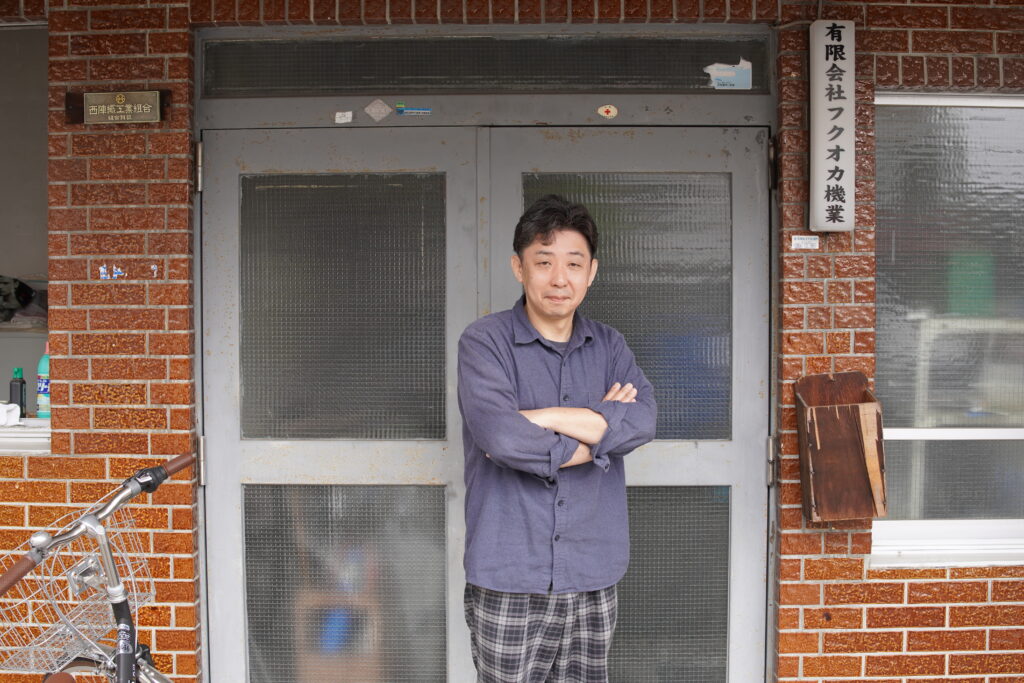
- ―Could you let me know about your background since childhood?
-
I was born in Nishijin in April 1970. I was born in Kyoto, having attended local schools till the age of 18. There were many things I wanted to do, but I kept them bottled up inside my heart, and I started working for Fukuoka Weaving Co., Ltd. in 1989 (age of 19).
- ―How was the first few years after you started working?
-
My seniors were very strict. He told me that I should learn a job by watching my seniors’ working. At the beginning stage, I faced a lot of difficulties, but I tried to overcome those challenges in my own way. I worked so hard at my job, but when the Japanese bubble economy burst in 1990, the number of orders for Nishijin Ori suddenly decreased. Everything I had done up to that point had changed. To be honest, I didn’t know what to do. In 1998, at the age of 29, I became the representative of the company. I was not forced to take over the business, but I made a choice to preserve the tradition that had been in place since 1902.
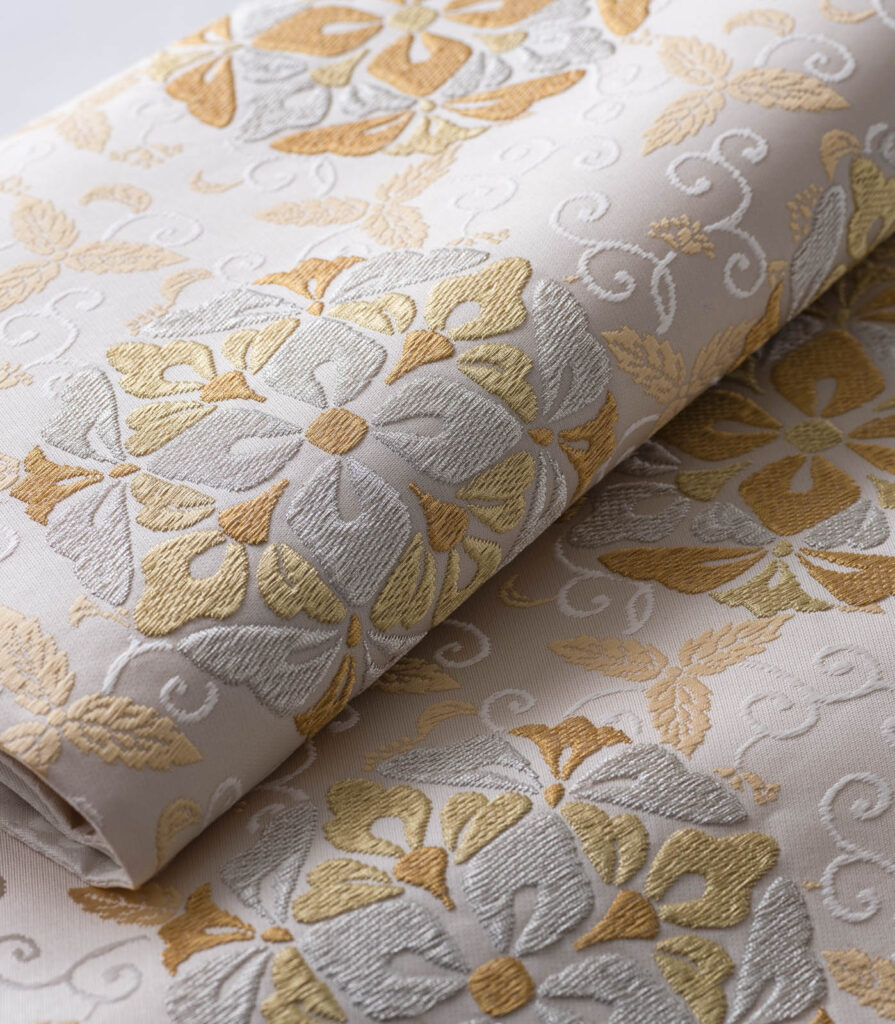
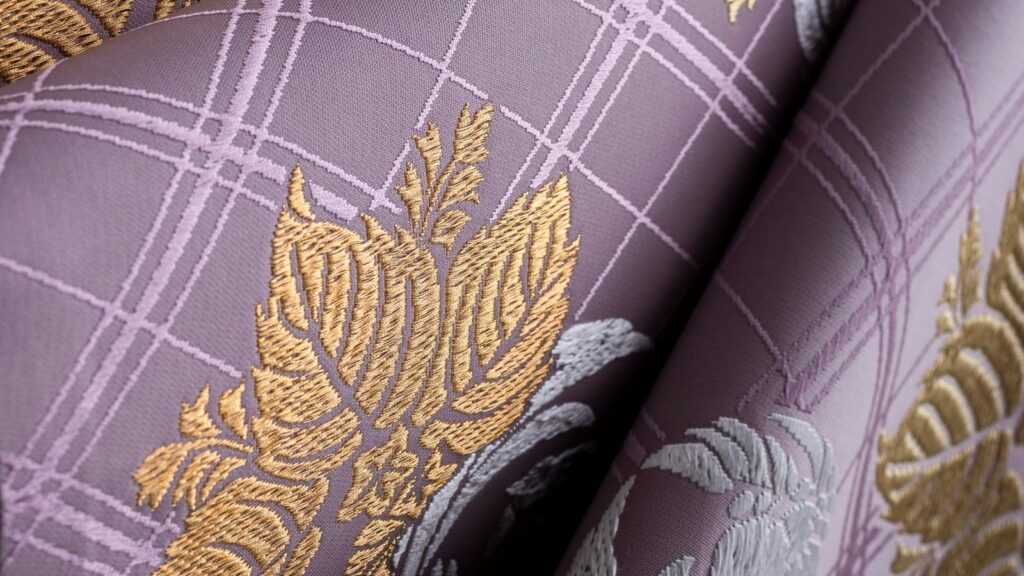
- ―Do you have any hobbies?
-
I used to play golf, but now I don’t have time off…. Now doing my job has already become like a hobby, and above all, I enjoy my working.
- ―Must be nice to have fun at work!! Let’s move on to the current market environment. The traditional craft industry itself is becoming shrinking market at the moment. What is your commitment to the fact that sometimes modern trends and craftsmen’s intentions do not match?
-
I want to continue my textile work and there are many things I want to preserve. I think I have to work on new things if I want to preserve this craftsmanship. Even if it is not the inherited production, the most important thing I need to preserve is traditional skills.
-1-4-1024x683.jpg)
- ―What specific activities did you engage in?
-
When the Great Hanshin-Awaji Earthquake occurred, I was repairing buildings by using carbon fiber, and wondered if the Nishijin textile techniques can be used there.
I tried to create carbon fiber textiles with trial and error. Finally, I completed the product in 2003, but there was already little demand for repair work.
Thinking of doing something different, I joined a project to clean up a lake in Gunma Prefecture as a new initiative. In that area, there were a lot of Japanese smelts, and the local industry was dependent on them. However, after Japanese smelts were not caught in the area, I took on the challenge of using carbon fiber to clean the water. As a result, the project succeeded and people were able to catch Japanese smelts again. The local industry seemed to be back on track, but there was a new problem. The carbon fiber would break off due to the flow of oceans or rivers. After I heard of this, I took my own fabric and proved its strength. Since then, I have been putting my effort on cleaning up rivers and ocean throughout Japan.

- ―I didn’t know Nishijin textile techniques were used in such a field. That’s amazing! In what forms do you hope to preserve Nishijin textiles in the future?
-
I have no resistance to the fusion of new technology and culture. By incorporating those factors, I want to preserve the original textile. By collaborating the various shades and techniques of Nishijin textiles with other things, I want the greatness of Nishijin textiles to be recognized not only in Japan but also throughout the world.
Watch the Nishijin Ori production process on YouTube!

Suigenkyo Online Store
We offer a wide range of products including tableware, accessories, and interior design.
Suigenkyo YouTube
You can see the making process of the products listed on Suigenkyo Online Store.
